The Best Fluffy Pancakes recipe you will fall in love with. Full of tips and tricks to help you make the best pancakes.
Dhaka is the capital city of Bangladesh and also the largest city in the country. With a population of over 21 million people, it is one of the most densely populated cities in the world. Dhaka has a rich history and cultural heritage, with landmarks such as the Lalbagh Fort, Ahsan Manzil, and the Jatiyo Sangsad Bhaban, which is the National Parliament Building. The city is also known for its vibrant street life and delicious street food. Despite facing challenges such as traffic congestion, air pollution, and poverty, Dhaka remains an important center for politics, commerce, and culture in Bangladesh.
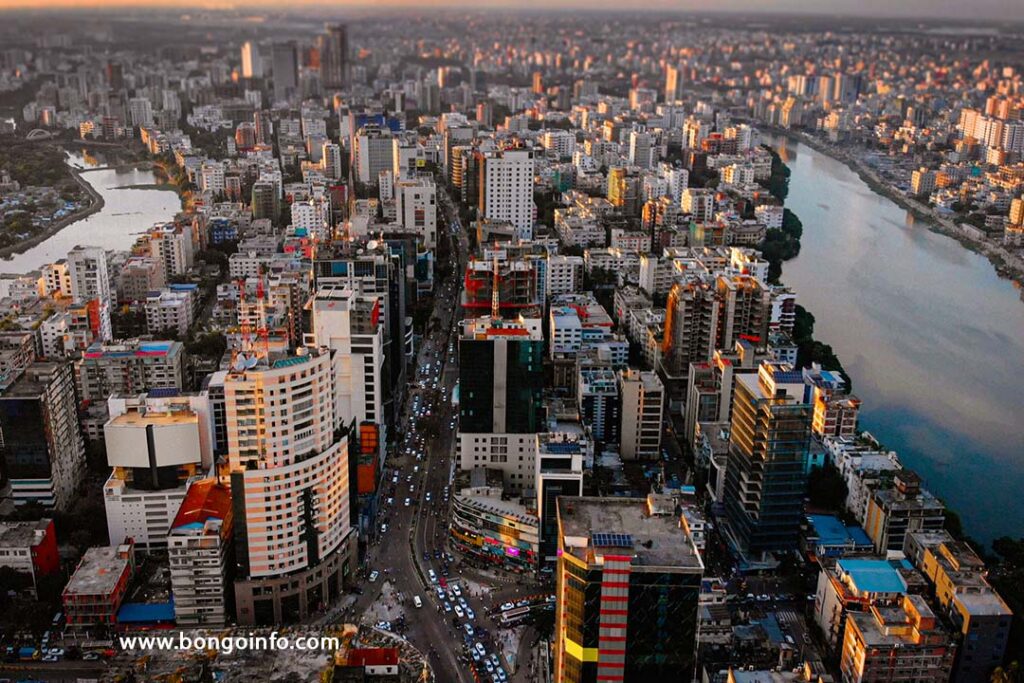
Dhaka is the capital of Bangladesh
Dhaka became the capital of Bangladesh after the country gained independence from Pakistan in 1971. Prior to that, Dhaka was the capital of East Pakistan, one of the two regions of Pakistan. After a nine-month war for independence, Bangladesh was established as a sovereign nation, with Dhaka as its capital. The decision to make Dhaka the capital was based on several factors, including its central location within the country, its historical and cultural significance, and its established infrastructure. Today, Dhaka serves as the center of the country’s political, cultural, and economic life, with many government buildings, embassies, and international organizations located in the city.
Important Places to See in Dhaka
Dhaka is a city with a rich history and cultural heritage, and there are many important places to see in the city. Here are a few of the most notable:
Lalbagh Fort
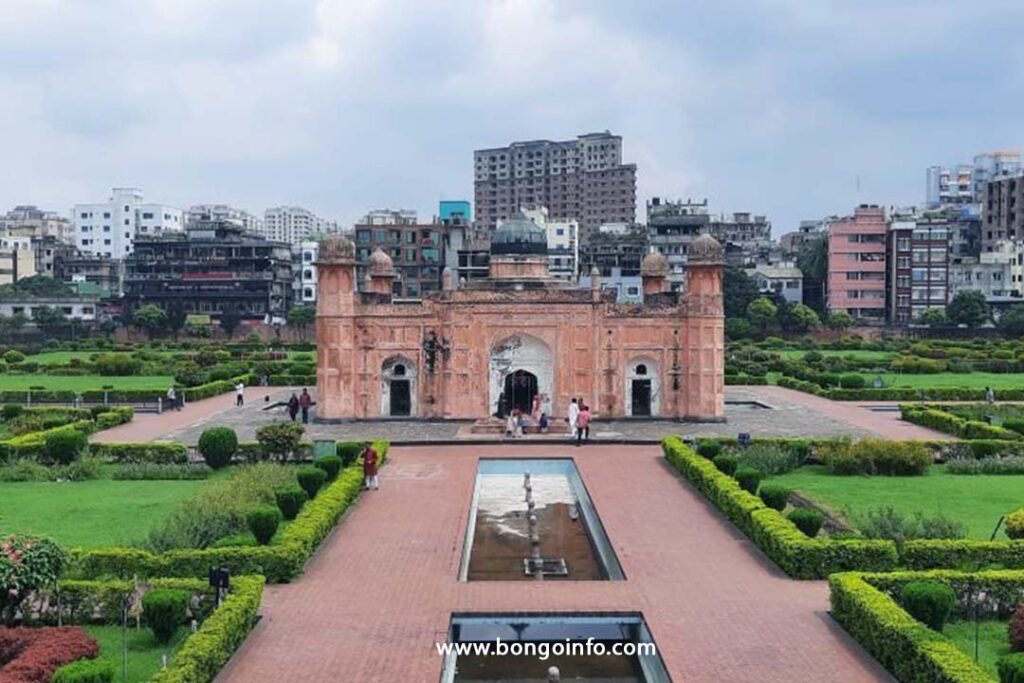
Lalbagh Fort is a 17th century fort located in Dhaka, Bangladesh. The fort was built by Mughal Emperor Aurangzeb, but was never completed. Despite this, the fort remains an important landmark in the city and is considered one of the key attractions of Dhaka. The fort features several impressive structures, including an audience hall, a mosque, and a tomb, all of which are notable for their intricate carvings, arches, and domes. Lalbagh Fort is also an important site in Bangladesh’s history, as it was the scene of several key events during the country’s struggle for independence from Pakistan. Today, the fort is a popular tourist destination, attracting visitors from all over the world with its stunning architecture, rich cultural heritage, and stunning views of the city.
Ahsan Manzil
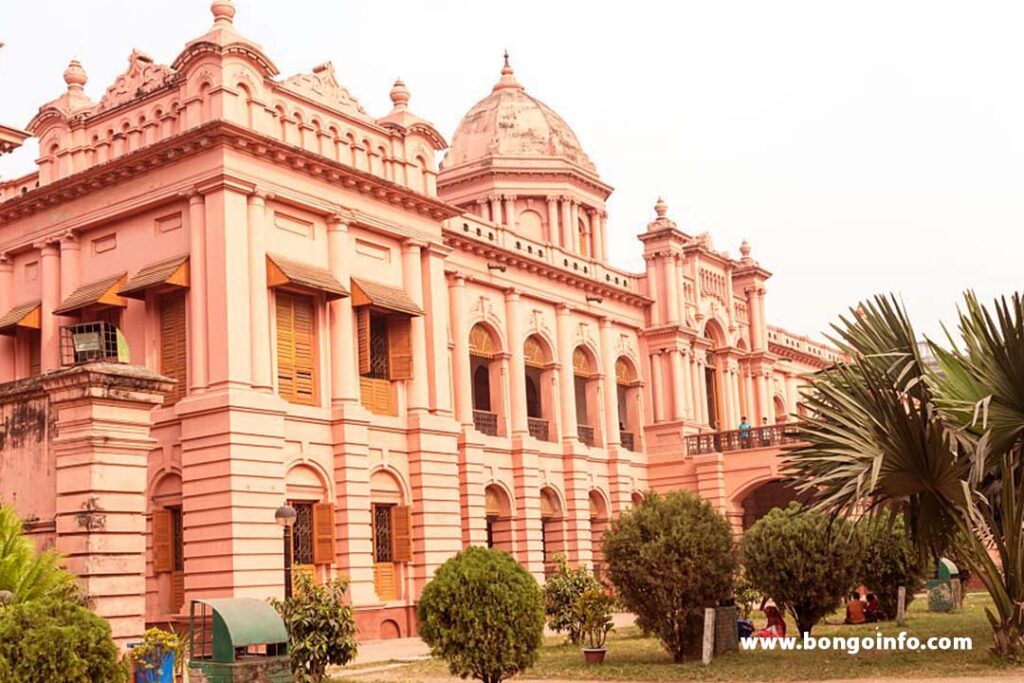
Ahsan Manzil is a grand palace located in Dhaka, Bangladesh. Built in the 19th century, it was once the residence of the Nawab of Dhaka, and is now a museum showcasing the rich cultural heritage of Bangladesh. The palace is considered one of the finest examples of Indo-European architecture in Bangladesh, and is known for its stunning interiors, grand staircase, and impressive dome. Ahsan Manzil is also an important cultural and historical landmark, with many exhibitions showcasing the history of the palace and its former residents, as well as the history of Dhaka and Bangladesh. The palace grounds are also a popular spot for picnics and cultural events, making it a popular destination for both tourists and locals alike. Overall, Ahsan Manzil is an important part of Dhaka’s rich cultural and historical heritage, and is well worth a visit for anyone interested in the history and culture of Bangladesh.
Baitul Mukarram National Mosque

Baitul Mukarram National Mosque is a mosque located in Dhaka, Bangladesh. It is the largest mosque in Bangladesh and one of the largest in the world, with the capacity to accommodate over 40,000 worshippers at a time. The mosque was built in the late 20th century and is known for its modern and distinctive design, which features a large central dome surrounded by several smaller domes and minarets. The mosque is a popular destination for religious events and ceremonies, and is also used for educational and cultural purposes. Baitul Mukarram National Mosque is an important symbol of Islam in Bangladesh, and is a popular tourist destination for those interested in religious architecture and the history and culture of Bangladesh.
Sadarghat River Port
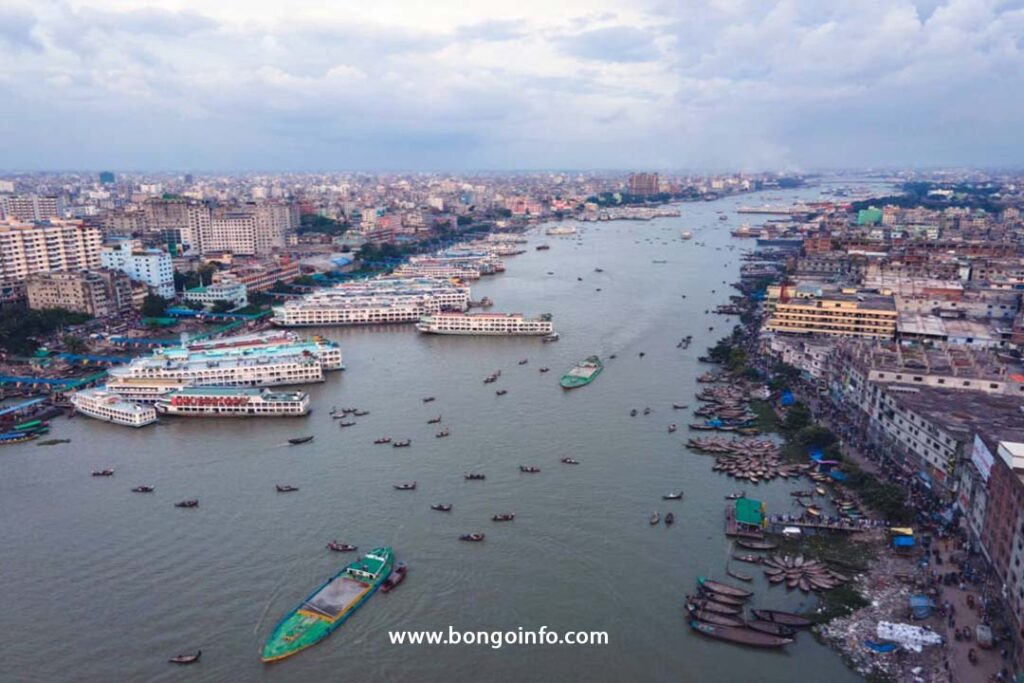
Sadarghat is a river port located in Dhaka, Bangladesh. It is the largest river port in Bangladesh, and serves as a major transportation hub for the city and the surrounding areas. Sadarghat is located on the banks of the Buriganga River, and is the starting point for a large number of river ferries that connect Dhaka with other parts of the country. The port is also a popular destination for tourists, who come to see the bustling activity of the boats, as well as to explore the nearby neighborhoods and markets. Sadarghat is an important part of the cultural and economic life of Dhaka, and is well worth a visit for anyone interested in the history and culture of Bangladesh.
Central Shaheed Minar
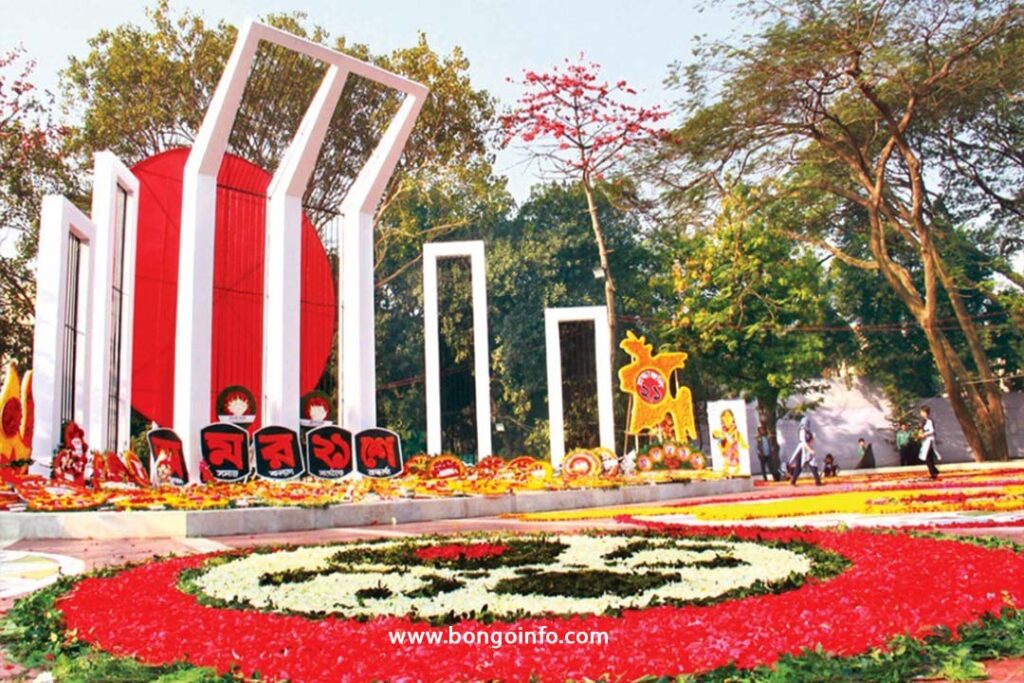
Central Shaheed Minar is a memorial located in Dhaka, Bangladesh, dedicated to the memory of the students and intellectuals who were killed by the police during the Language Movement of 1952. The Language Movement was a political campaign that demanded recognition of Bengali as one of the official languages of Pakistan, and the central Shaheed Minar serves as a symbol of the sacrifices made by the people of Bangladesh to defend their cultural identity and language. The memorial is a tall tower made of marble, surrounded by a spacious park and a large square, and is decorated with sculptures, fountains, and other artworks. The central Shaheed Minar is a major site of national importance, and is visited by hundreds of thousands of people every year, who come to pay their respects to the martyrs of the Language Movement. It is also an important center of cultural and political life in Dhaka, and is well worth a visit for anyone interested in the history and culture of Bangladesh.
Jatiyo Sriti Shoudho (National Martyrs’ Memorial)

Jatiyo Sriti Shoudho, also known as the National Martyrs’ Memorial, is a memorial located in Dhaka, Bangladesh. It was built to commemorate the sacrifices of the Bengali independence fighters who lost their lives during the Bangladesh Liberation War in 1971. The memorial is located in a large park, and is designed in the shape of a seven-pointed star. The center of the star contains the main memorial structure, which consists of several towering concrete pillars and a central platform. The surrounding park contains several gardens and open spaces, making it a popular destination for picnics and outdoor events. Jatiyo Sriti Shoudho is an important symbol of Bangladesh’s independence and history, and is a popular destination for those interested in the history and culture of the country.
National Parliament House
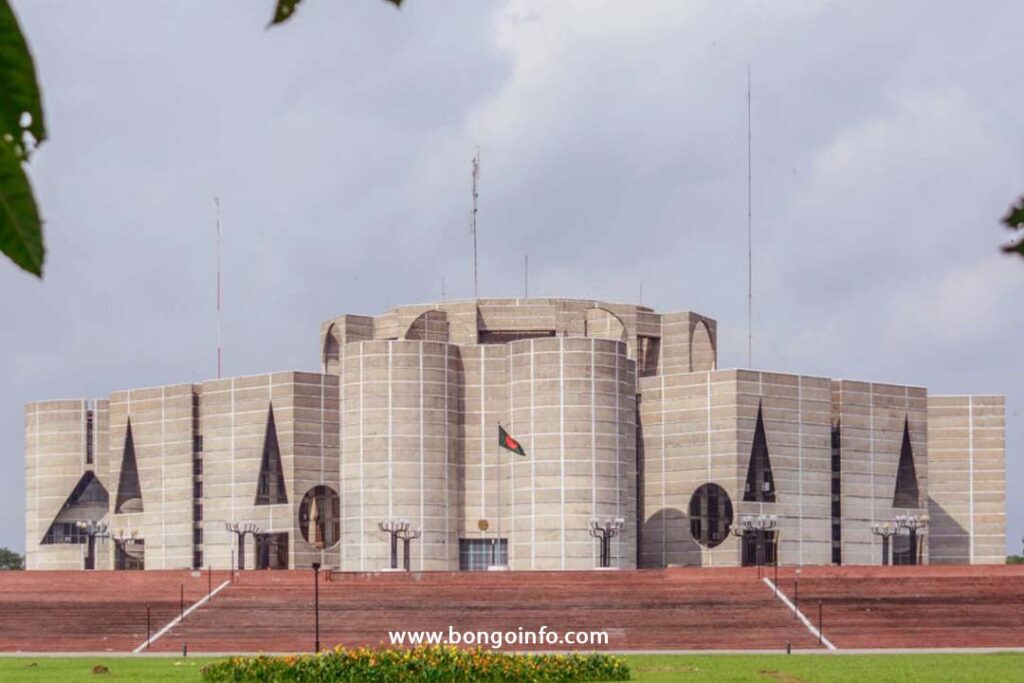
Jatiyo Sangsad Bhaban, also known as the National Parliament House, is the parliamentary building of Bangladesh, located in the capital city of Dhaka. Designed by the renowned American architect Louis Kahn, the building is considered a masterpiece of modern architecture and is renowned for its stunning design and impressive scale. The building features a large central dome, surrounded by several smaller domes and clusters of smaller buildings, creating a complex and highly functional structure. The interior of the building is also noteworthy, with a spacious central chamber for the Bangladesh parliament and several smaller committee rooms. Jatiyo Sangsad Bhaban is an important symbol of Bangladesh’s independence and democratic values, and is a popular tourist destination for those interested in architecture and politics.
National Memorial Museum

The National Memorial Museum is a museum located in Dhaka, Bangladesh. It is dedicated to preserving the memory of the Bangladesh Liberation War, which was fought in 1971 between East Pakistan (present-day Bangladesh) and West Pakistan. The museum contains a large collection of artifacts, documents, photographs, and other materials related to the war, as well as interactive exhibits and displays that tell the story of the conflict and its aftermath. The museum also houses a research center that is dedicated to the study of the war and its historical significance. The National Memorial Museum is an important center for historical research and education, and is visited by hundreds of thousands of people every year, who come to learn about the events of the war and pay their respects to those who lost their lives. Overall, the museum is an important part of the cultural heritage of Bangladesh and is well worth a visit for anyone interested in the history and culture of the country.
Dhaka University
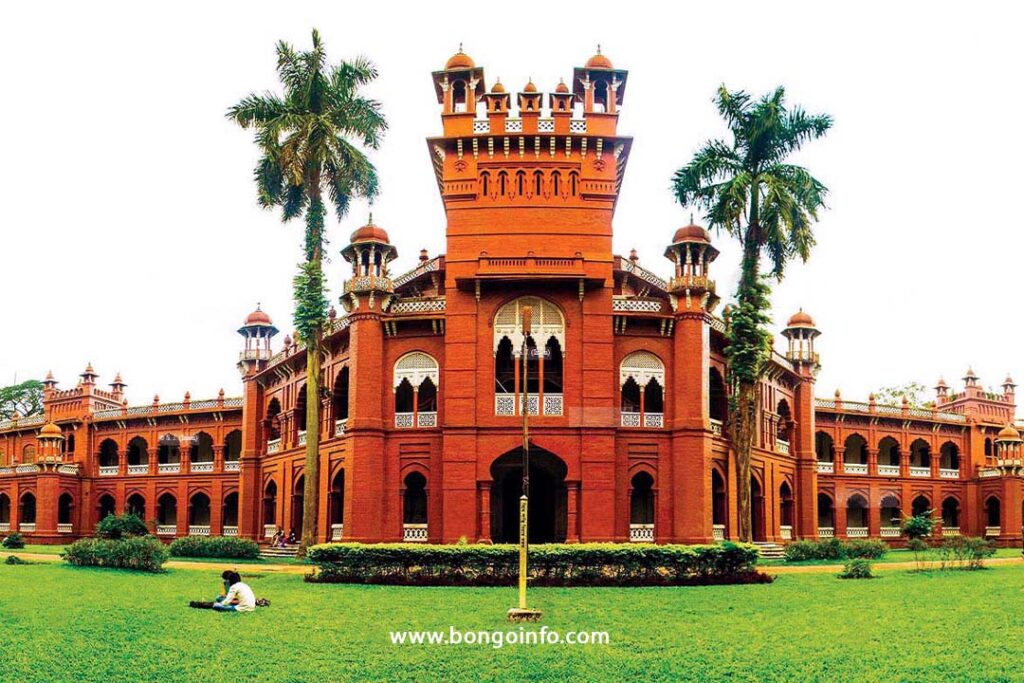
Dhaka University is a public research university located in Dhaka, Bangladesh. It was established in 1921 and is one of the oldest and most prestigious universities in Bangladesh. Dhaka University has a rich history and has played a key role in the cultural, political, and intellectual life of the country. The university is spread over a large campus, and has several faculties and departments, offering a wide range of undergraduate and graduate programs in a variety of fields, including arts, humanities, sciences, engineering, and business. Dhaka University is also known for its active student life, with a large and vibrant student community that is involved in a wide range of extracurricular activities and clubs. The university is an important center of research and innovation, and has produced many influential figures in the arts, sciences, and politics of Bangladesh. Overall, Dhaka University is an important part of the cultural and intellectual life of Bangladesh, and is well worth a visit for anyone interested in the history and culture of the country.
Jahangirnagar University
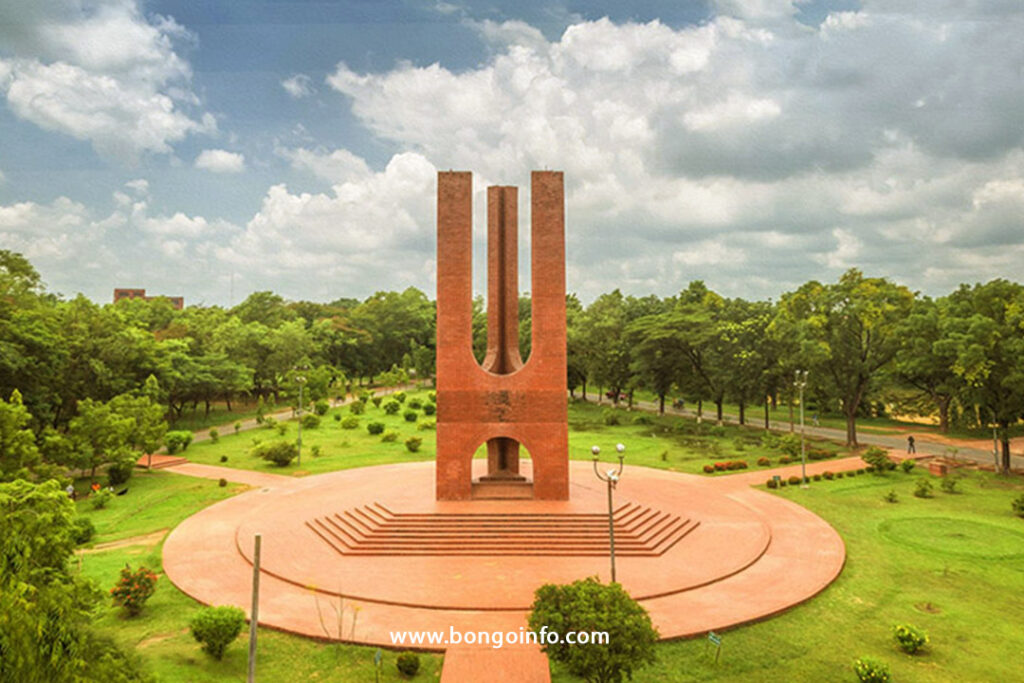
Jahangirnagar University is a public research university located in Savar, near Dhaka, Bangladesh. It was established in 1970 and is one of the leading universities in Bangladesh, renowned for its academic excellence and research output. The university has several faculties and departments, offering a wide range of undergraduate and graduate programs in a variety of fields, including arts, humanities, social sciences, natural sciences, and engineering. Jahangirnagar University has a large and diverse student body, with a thriving student life that is active in a wide range of extracurricular activities and clubs. The university is known for its beautiful campus, which is spread over a large area of lush green land and includes several modern academic and residential buildings, as well as several parks and lakes. Jahangirnagar University is an important center of academic and intellectual life in Bangladesh, and is well worth a visit for anyone interested in the history and culture of the country.
DEPZ
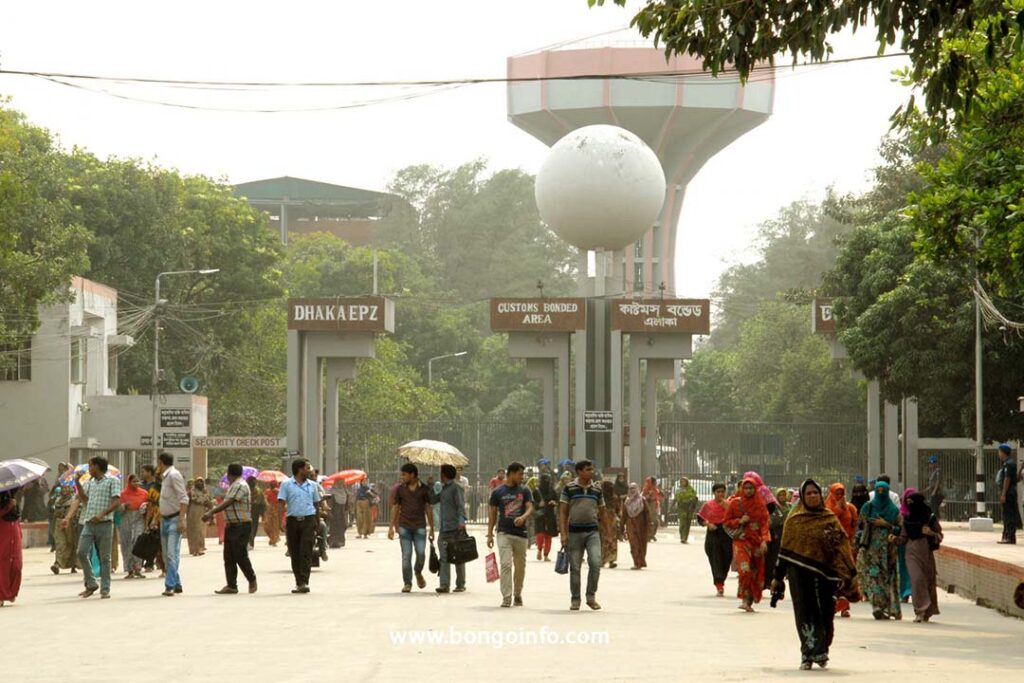
DEPZ (Dhaka Export Processing Zone) is a special economic zone located in Dhaka, Bangladesh. It was established to encourage foreign investment and support the development of the export-oriented industries in Bangladesh. The zone provides a range of benefits to its tenants, including tax holidays, duty-free import of capital goods and raw materials, and streamlined customs procedures, among others. DEPZ is home to a number of international companies, especially in the fields of garment manufacturing and electronics, and is a major contributor to the country’s economy. The zone is located near the airport and is well connected to other parts of the city, making it an attractive destination for investment and business. Overall, DEPZ is an important part of Bangladesh’s economic development strategy and is helping to boost the country’s competitiveness in the global market.
National Zoo
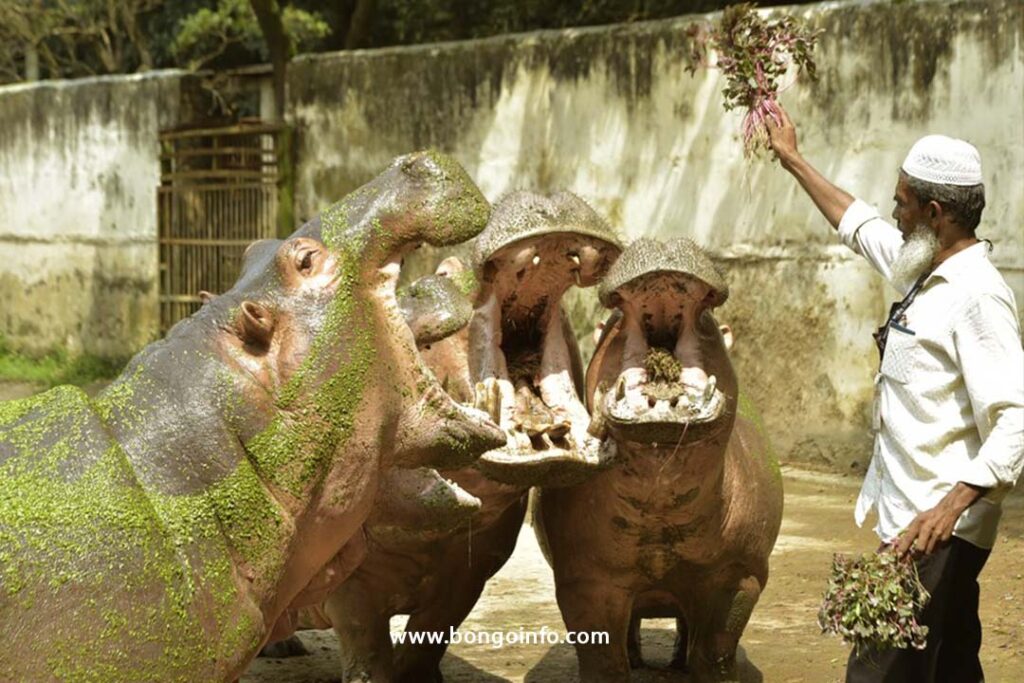
Dhaka Zoo, also known as the Bangladesh National Zoo, is a zoological garden located in Dhaka, Bangladesh. It was established in 1974 and is one of the largest zoos in South Asia. The zoo is home to a wide variety of animals, including tigers, lions, elephants, monkeys, birds, and reptiles, among others. The zoo is a popular destination for families and children, who come to see the animals and learn about the different species. The zoo is also a major center for conservation and research, and works to protect and preserve endangered species from Bangladesh and around the world. Dhaka Zoo is located in the heart of the city, and is easily accessible by public transportation. Overall, it is a great place to visit for anyone interested in wildlife and conservation.
Population
Dhaka, the capital city of Bangladesh, is one of the largest cities in the world, with a population estimated to be over 21 million people as of 2021. Dhaka is the center of Bangladesh’s political, cultural, and economic life, and is a major contributor to the country’s economy. The city is located in central Bangladesh, on the banks of the Buriganga River, and is surrounded by fertile agricultural land. Despite its size and importance, Dhaka faces a number of challenges, including traffic congestion, air and water pollution, and a shortage of basic services such as housing, healthcare, and education. Nevertheless, the city continues to grow and thrive, and remains an important hub of economic activity and a center of innovation and creativity.
These are just a few of the many important places to see in Dhaka, and there is something for everyone in this vibrant and dynamic city.
Bad side of Dhaka
Dhaka, the capital city of Bangladesh, faces a number of challenges that impact its residents and visitors. Some of the biggest problems in Dhaka include:
Traffic Congestion: Dhaka is infamous for its severe traffic congestion, which results in long commute times, air pollution, and noise pollution.
Pollution: Dhaka is also plagued by air and water pollution, which is harmful to the health of its residents and the environment.
Overpopulation: With a population of over 21 million people, Dhaka is one of the most densely populated cities in the world, and this high population density has put a strain on the city’s infrastructure, including housing, healthcare, and education.
Poverty: Despite its economic importance, Dhaka is also home to a large number of slums and informal settlements, where many people live in poverty and lack access to basic services such as clean water, sanitation, and healthcare.
Flooding: Dhaka is located in a low-lying area and is susceptible to flooding during the monsoon season, which can result in damage to infrastructure and displacement of residents.
Corruption: Corruption is a major problem in Bangladesh, and this is reflected in Dhaka as well, where bribery and nepotism are commonplace, and this has a negative impact on the functioning of the city and the delivery of public services.
Overall, Dhaka faces many challenges, but despite these issues, the city continues to grow and thrive, and remains an important center of economic and cultural activity in Bangladesh.
Good side of Dhaka
Dhaka, the capital city of Bangladesh, has many positive aspects that make it a great place to visit and live in. Some of the good sides of Dhaka include:
Cultural Diversity: Dhaka is a melting pot of cultures, with a rich history and diverse population that makes it a fascinating place to explore.
Street Food: Dhaka is famous for its street food, and visitors can try delicious and unique dishes at food stalls and restaurants throughout the city.
Architecture: Dhaka is home to many historic buildings and monuments, including the Lalbagh Fort, Ahsan Manzil, and Baitul Mukarram National Mosque, which showcase the city’s rich architectural heritage.
Education: Dhaka is home to some of Bangladesh’s most prestigious universities, including Dhaka University, Jahangirnagar University, and BRAC University, and is a hub of academic and intellectual activity.
Shopping: Dhaka is a shopper’s paradise, with a range of markets and shopping centers offering everything from traditional textiles and handicrafts to modern electronics and clothing.
Nightlife: Despite its conservative reputation, Dhaka has a thriving nightlife scene, with bars, clubs, and live music venues that are popular with locals and visitors alike.
Festivals: Dhaka is home to many festivals and celebrations, including the traditional Eid al-Fitr and Eid al-Adha festivals, as well as the colorful Durga Puja and Pohela Boishakh festivals.
Overall, Dhaka has many positive aspects that make it a great place to visit and experience, and its rich cultural heritage, diverse population, and vibrant urban life make it an exciting and unique destination.
Conclusion
Dhaka, the capital city of Bangladesh, is a vibrant and dynamic metropolis that has much to offer visitors and residents alike. Despite facing a number of challenges, such as traffic congestion, pollution, poverty, and corruption, Dhaka is a city rich in culture, history, and diversity, and is home to many interesting places to see, including historic buildings and monuments, food stalls, shopping centers, and universities. With its bustling street life, vibrant nightlife, and exciting festivals, Dhaka is a city that has something to offer everyone, and is well worth a visit.


